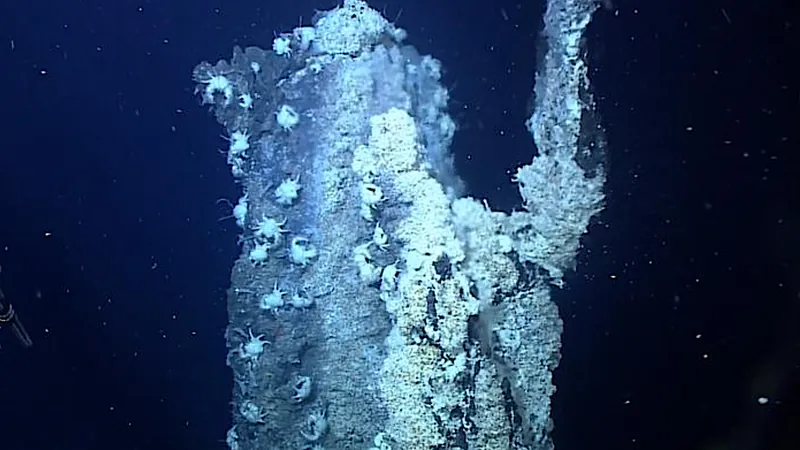
Beneath the Surface: How a Deep-Sea Marvel Turns Poison into Gold
2025-08-30
Author: Nur
Meet the Incredible Paralvinella hessleri
In the depths of the Pacific Ocean, among the boiling waters of hydrothermal vents, lies a remarkable creature—the deep-sea worm Paralvinella hessleri. Unlike any other, this extraordinary worm has learned to thrive in one of the most toxic environments on Earth, where arsenic and sulfide levels can be lethal.
The Secret to Survival
Recent research led by Chaolun Li from the Institute of Oceanology, China, has uncovered how P. hessleri defies the odds. Instead of succumbing to the toxic arsenic that builds up in its body—sometimes constituting over 1% of its weight—the worm ingeniously combines it with sulfide from the vent waters to create a stable, less harmful mineral known as orpiment.
A Groundbreaking Detoxification Process
Using advanced scientific techniques including microscopy and chemical analysis, researchers discovered an unprecedented detoxification strategy employed by this little worm. The skin cells of P. hessleri collect arsenic particles that then react with sulfide, forming tiny clusters of the vibrant yellow mineral orpiment.
A Vibrant Spectacle of Nature
Images captured during the study reveal the striking appearance of these worms against the stark, dark landscape of hydrothermal vents. Co-researcher Dr. Hao Wang described the first sighting of P. hessleri as astonishing, noting their bright yellow coloration contrasting vividly with the surrounding pipes of white biofilm.
Art Meets Science in the Deep Ocean
Interestingly, the orpiment these worms produce has historical significance, once coveted by painters of the medieval and Renaissance eras for its striking golden hue. This intertwining of biology and art history highlights an intriguing facet of life many of us overlook when contemplating the origins of creativity.
Rethinking Toxicity in Marine Life
The research team hopes their findings shift the paradigm regarding how marine invertebrates interact with toxic substances. This unique ‘fighting poison with poison’ approach presents a fascinating perspective on life in extreme environments, inviting further exploration into how such creatures not only survive but flourish in toxicity.
What Lies Ahead?
This study opens doors to further investigations into similar adaptation mechanisms among other marine species. As scientists explore the depths, the ability to turn toxicity into survival may lead to groundbreaking discoveries in environmental science and biotechnology.




 Brasil (PT)
Brasil (PT)
 Canada (EN)
Canada (EN)
 Chile (ES)
Chile (ES)
 Česko (CS)
Česko (CS)
 대한민국 (KO)
대한민국 (KO)
 España (ES)
España (ES)
 France (FR)
France (FR)
 Hong Kong (EN)
Hong Kong (EN)
 Italia (IT)
Italia (IT)
 日本 (JA)
日本 (JA)
 Magyarország (HU)
Magyarország (HU)
 Norge (NO)
Norge (NO)
 Polska (PL)
Polska (PL)
 Schweiz (DE)
Schweiz (DE)
 Singapore (EN)
Singapore (EN)
 Sverige (SV)
Sverige (SV)
 Suomi (FI)
Suomi (FI)
 Türkiye (TR)
Türkiye (TR)
 الإمارات العربية المتحدة (AR)
الإمارات العربية المتحدة (AR)